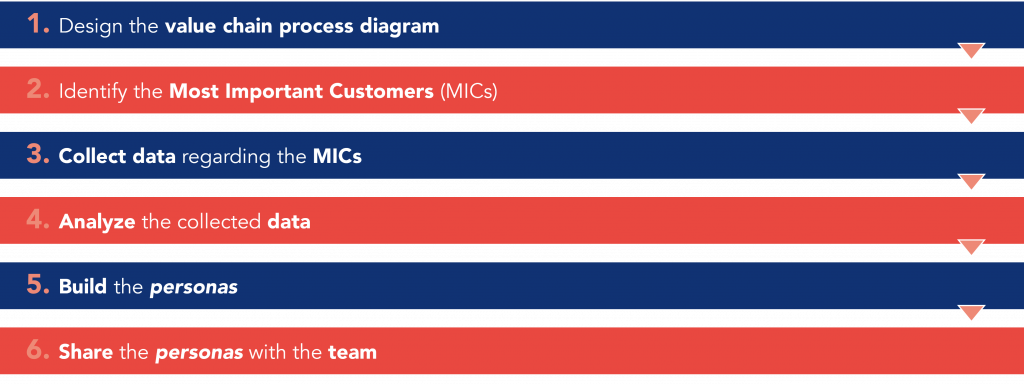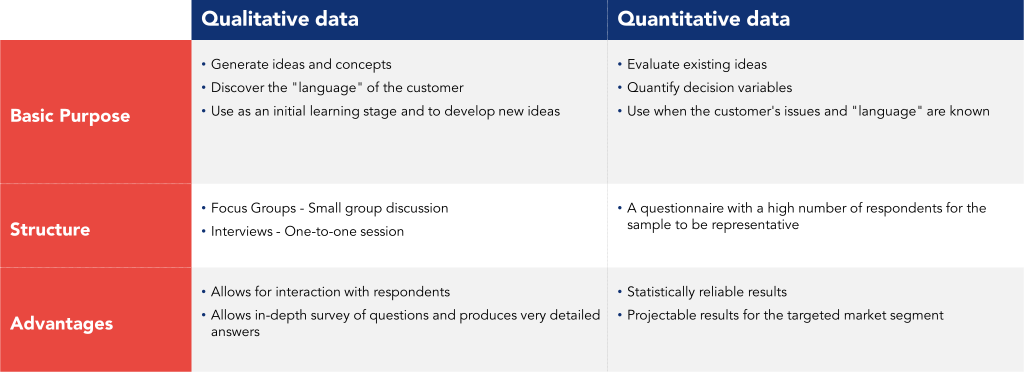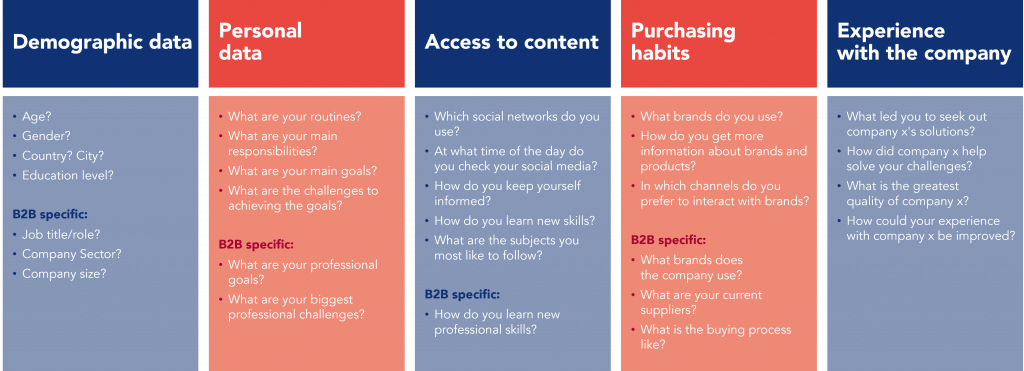Every company needs a targeted marketing strategy to be efficient. To talk about the products and services effectively, you need to know who you are talking to. It is unlikely that you can reach the entire prospective market with a single message. It is necessary to identify specific target market groups and speak directly to these people. Creating fictional characters representing the buyer helps the marketing team develop more personalized content.
What are segmentation and targeting in marketing?
Segmentation and targeting are part of a holistic marketing strategy. These approaches impact not only marketing activities but also selling activities, as well as improving the customer experience.
Segmentation and targeting are a strategy that divides a market into smaller segments to focus on a specific group of customers within that audience. It defines a customer segment based on its unique characteristics and focuses on serving it. In other words, it is the identification and characterization of the people who intervene and influence the buying process.
Segmentation and targeting are crucial to content development. Knowing the target audience makes it possible to develop appropriate content that leads to the intended goal.
What are the segmentation and targeting goals?
To communicate assertively, it is necessary to know, in advance, for whom we are doing it. There is no way to be assertive if we have no idea with whom we are communicating.
Segmentation and targeting allow us to:
Improve communication effectiveness
Marketing messages reach audiences more deeply when targeted. Companies with a large and diverse customer market face difficulties creating marketing campaigns that work for everyone. Having very different targets, few messages can work with each person on a personal level. Through targeting, it is possible to minimize this problem and create messages that are specific to a target audience.
Differentiate yourself from your competitors
When you stop trying to talk to every customer in the market and start focusing on a specific audience segment, you stand out from your competitors. When customers identify with the brand and its value propositions, they will choose it over a competitor who is not explicitly speaking to them.
Attract and convert high-quality leads
When you talk directly to the people you want to reach, you are more likely to attract the right people. Marketing more effectively reaches the people most likely to do business with the company. You are, therefore, more likely to get high-quality leads that are more easily turned into customers.
Develop deeper customer loyalty
The organization’s ability to stand out from competitors by reaching out to customers on a more personal level also creates stronger, longer-lasting relationships. When customers identify with the brand and feel it is advocating for their specific perspectives and needs, they become more loyal and do business with the company for a more extended time.
Continuously improve the value proposition
Knowing your customers better allows you to look at your products and services from a new perspective. A deep understanding of the target audience allows you to improve the value proposition.
Focus on the strategy and optimize resources
Targeting also helps marketing teams define the strategies to be adopted. It helps clarify the vision and align the team with more specific goals. It makes it easier to make plans for the future, both for marketing and for the business as a whole. A focused approach helps optimize resources, time, and budget.
In short, Segmentation and targeting can considerably increase the success of marketing strategies. By adequately segmenting their audience, companies will reach potential customers and convince them to buy the product or service more efficiently.
Targeting implementation
Targeting must be implemented through a structured approach. There are six main implementation steps:

1. Design the value chain process diagram
The first step involves designing the organization’s value chain process diagram and identifying all current and potential distribution and sales channels. In this step, you should also analyze your competitors’ distribution channels and strategies to identify new opportunities.
The diagram also includes organizations that do not buy the products or services but that in some way can influence the buying process. This is the case, for example, with industry associations, consulting firms in the area, project developers, and others.
The companies that are part of the value chain can be of different types, such as distributors, installers, designers, contractors, or others.

2. Identify the Most Important Customers (MICs)
After identifying the various elements of the value chain, it is necessary to understand, within each entity, who has the most power to decide or influence the buying process, that is, who are the Most Important Customers (MICs).
To identify the MICs, it is necessary to recognize all the people involved in purchasing and using the product downstream from the supplier. For this task, the following table is generally used:

The exercise starts by placing the companies identified in the value chain diagram in the first column of the table (for example, distributor, installer, designer, builder, or any other).
The next step is, for each company, to identify the personas (administrator, general manager, director of the purchasing department, technician, operator, etc.) that can decide or influence the buying process or are users of the product or service.
Once the personas have been identified, it is necessary to indicate their role in the buying process: decision-maker, influencer, or user.
The personas are classified into MICs based on a set of questions. Generally, the questions used are as follows:
- Is the persona responsible for solving problems that arise related to the purchase?
- Does the persona lose money if problems occur with the product or service bought?
- Does the persona know to recognize the value of the offer?
If necessary, these questions can be adapted, or supplemented with others, to allow a better assessment of the MICs.
Each question is assigned a rating, usually on a scale of 1 to 3. On this scale, 1 represents “No,” 2 means “Eventually,” and 3 represents “Yes.” After the scores are assigned, they are added up, and a final rating is assigned.
The MICs are the personas with the highest rating because they are the ones who have the most influence on the buying process. The higher the rating, the more attention the marketing and sales team should devote to them.
3. Collect data from the Most Important Customers
After identifying the MICs, we move on to building their corresponding personas.
The persona (or buyer persona) is a profile that represents each MIC. The persona is a character that summarizes, in a simple way, all the main attributes and characteristics of the brand’s customer or the influencer of the purchase. The persona considers that there is a person on the other side with whom the brand should interact.
The persona is defined in a structured way, looking at the data and understanding who the audience is and their characteristics and attributes.
The main advantages of creating personas are:
- Help define the language and style of the message;
- Help determine what content and messages should be written to meet the goal of selling the product or service;
- Help outline a communication strategy aligned with the buyer audience of the product;
- Help understand the buying behavior of customers.
Some examples of information that can be included in the creation of the persona:
- Name, age, and gender
- Level of education
- City and country where you live
- Current job title/function
- Area of professional activity
- Performance
- Most used social networks
- Consumption habits
- Means of communication used daily
- Professional and personal goals
- Professional and personal challenges
- Etc.
The persona creation should be a structured process and not simply describe someone you think represents your customers. The persona must result from research, data analysis, and construction.
Effective data collection begins with good planning of the research to be conducted. It is necessary to define the purpose and target audience, choose a team to work with, and select and build the data collection instruments.
In the case of targeting, the purpose of the research is to know the profile of the MICs, and the target audience should be a representative sample of each MIC previously identified. Regarding the team conducting the survey, ideally, it should have experience collecting the Voice of the Customer.
To carry out the research, different methods and instruments can be combined to provide a global view of the object of study: the profile of the MICs.
Quantitative and qualitative research can be conducted. Often both are used. Quantitative surveys include questionnaires and data collection from tools such as Google Analytics. Qualitative research includes interviews and focus groups.

Interviews and questionnaires are the most used methods. Questionnaires are usually done online. In interviews, face-to-face data collection allows us to perceive nuances of behavior that the virtual or the telephone often hinder, being necessary in some specific cases.
In qualitative research, it is not necessary to do a very high number of interviews because, after a certain number, the answers begin to repeat themselves. On the other hand, questionnaires can be applied to more people to have a representative sample of the customer base. There are several online tools available that allow you to do the questionnaires and analyze the results effectively.
The questions to ask will vary depending on the type of company and business segment, but a good practice is to include questions from these five themes:
- Demographic;
- Personal;
- Content Access;
- Buying habits;
- Experience with the company.
Some examples of questions from these 5 topics:

In the case of an open interview, the interviewer must be able to ask questions and listen to entire conversations while documenting the dialogue. A script of questions should be used, and the conversation should be conducted with some freedom.
For both interviews and questionnaires, it is essential to have the sensitivity to understand what and how many questions customers are willing to answer. A pre-test should be done with a small sample of target customers, regardless of the research method. This will allow you to validate the number of questions, their content, and their sequence.
4. Analyze the collected data
After the research, it is necessary to compile the data, transcribe the interviews, and study it all together.
How you analyze the data depends on the methodology you select. For qualitative methods, one method of analysis is the affinity diagram. For quantitative methods, statistical analysis is usually the best option.
The analysis should focus on identifying patterns in the responses. These patterns represent characteristics, problems, challenges, and questions common to various customers and should be part of the persona.
For example, if through the analysis, it is concluded that almost all respondents have higher education, usually use LinkedIn, and use online channels to buy. These are traits of the persona profile.
5. Build the personas
The persona comes to life from the data collected in the previous step. It becomes a well-defined profile with the most relevant characteristics and behaviors. To promote the use of the persona, the ideal is to involve the whole team in its creation.
The persona should be considered a human being who will interact with the brand, read the content, and buy the products or services. Since a human being is more than just a list of characteristics, you should try to develop a descriptive text about the persona you are creating.
Building a story can be a good help. You can describe a day in the persona’s life in which they interact with the product or service. This will make understanding their routines, attitudes, behaviors, and how they relate to the brand easier.
6. Share the persona with the team
Personas can play a relevant role for marketing teams, but there is no point in creating the personas if they are not used. Once the personas have a profile and a story, the data can be summarized in a document, and an image of someone who personifies those descriptions can be chosen. This document can be shared by email, printed, distributed, or pasted on the wall in the marketing team’s office so that it is always present in everyone’s mind.
The important thing is to make sure that everyone knows the personas the brand wants to interact with and that they think about them when they are defining processes and developing content.
Segmentation and targeting as key elements of personalization
The current state of markets and the economy requires companies to be accurate. You cannot cater to everyone with the same approach. People do not identify with generic messages and expect companies to be specific and direct.
Personalization is key today. Segmentation and targeting allow you to connect your business to specific groups of people who are interested in a product or service.
Segmentation and targeting are a crucial step in getting the most out of the resources invested in marketing and helps the company in its effort to stand out from the competition.
In short, segmentation and targeting are the right approach to achieve better conversion rates, strengthen the brand, and create long-lasting relationships with customers.

See more on Sales & Marketing
Find out more about improving this business area
